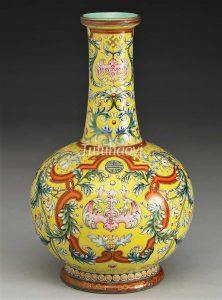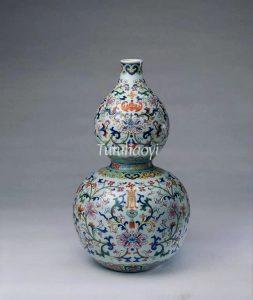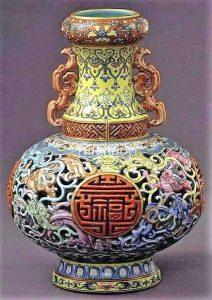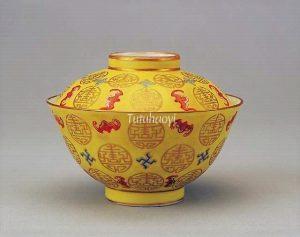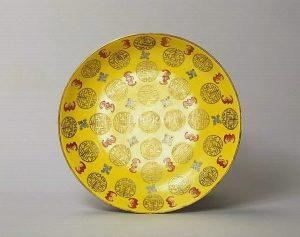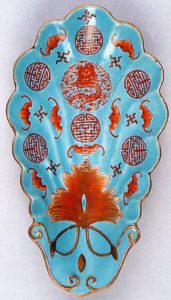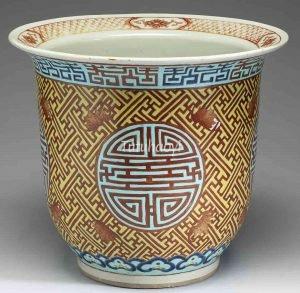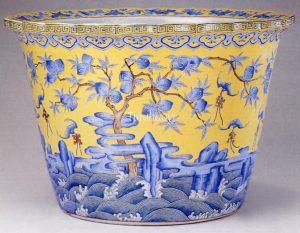May you enjoy long life and always be blessed by good fortune
福寿万年
© Tutuhaoyi.com owns the copyright of the description content for the images attached. Quoting all or part of the description content on this page is permitted ONLY IF ‘Tutuhaoyi.com’ is clearly acknowledged anywhere your quote is produced unless stated otherwise. (本页描述内容版权归Tutuhaoyi.com所有,转发或引用需注明 “Tutuhaoyi.com”, 侵权必究, 已注开源信息的条目除外。)
Either the clockwise swastika 卐 (sounding ‘wan’ 万) or the counterclockwise sauwastika 卍 is used interchangeably in Chinese decorative arts as well as in some religious contexts, as can be seen co-occurring on the same vessel displayed here. Roughly speaking, the swastika means ‘the myriad auspicious things in the universe’.
When swastika is combined with the Chinese character shou 寿 (meaning long life) and the image of the bat, whose pronunciation puns on the Chinese word fu 福 for ‘luck’ or ‘good fortune’, the composition is used to express good wishes of the highest order on the receiver’s life span and good fortune, such as ‘May you enjoy long life and always be blessed by good fortune (福寿万年)’ or ‘May you have inexhaustible good fortune and longevity (万福万寿)’. Art works adorned with this design are apt birthday presents for revered personages up to kings and emperors.
The characteristic Chinese longevity symbol, the peach fruit, is often used in this pun rebus design as an alternative or reinforcement of the character shou, with a more naturalistic touch.
Fig 1: porcelain vase with overglaze enamelled decoration, Qianlong period (1736-95), Qing dynasty, courtesy of the National Palace Museum, Taipei
Fig 2: double-gourd porcelain vase with overglaze enamelled decoration, Qianlong period (1736-95), Qing dynasty, courtesy of Palace Museum, Beijing
Fig 3: porcelain vase, Qianlong period (1736-95), Qing dynasty, courtesy of the National Palace Museum, Taipei
Fig 4: lidded porcelain bowl, Tongzhi period (1861-75), Qing dynasty, courtesy of Palace Museum, Beijing
Fig 5: porcelain dish, Tongzhi period (1861-75), Qing dynasty, courtesy of Palace Museum, Beijing
Fig 6: porcelain dish with overglaze enamelled decoration, Guangxu period (1875-1908), courtesy of Palace Museum, Beijing
Fig 7: porcelain flower pot with overglaze enamelled decoration, Guangxu period (1875-1908), courtesy of the National Palace Museum, Taipei
Fig 8: porcelain urn with overglaze enamelled decoration, Guangxu period (1875-1908), courtesy of Palace Museum, Beijing
Fig 9: brickwork (detail), Summer Palace, Beijing, photo by Weibo ID: Yihe Wulao
